Wedding Ceremony Photography Tips: Capturing Perfect Moments
Capturing the essence of a wedding ceremony through photography is both an exciting and demanding task. You’ll want to ensure every heartfelt moment, from the exchange of vows to the emotional reactions of the guests, is beautifully documented. Wedding ceremony photography can help preserve these cherished memories for years to come.
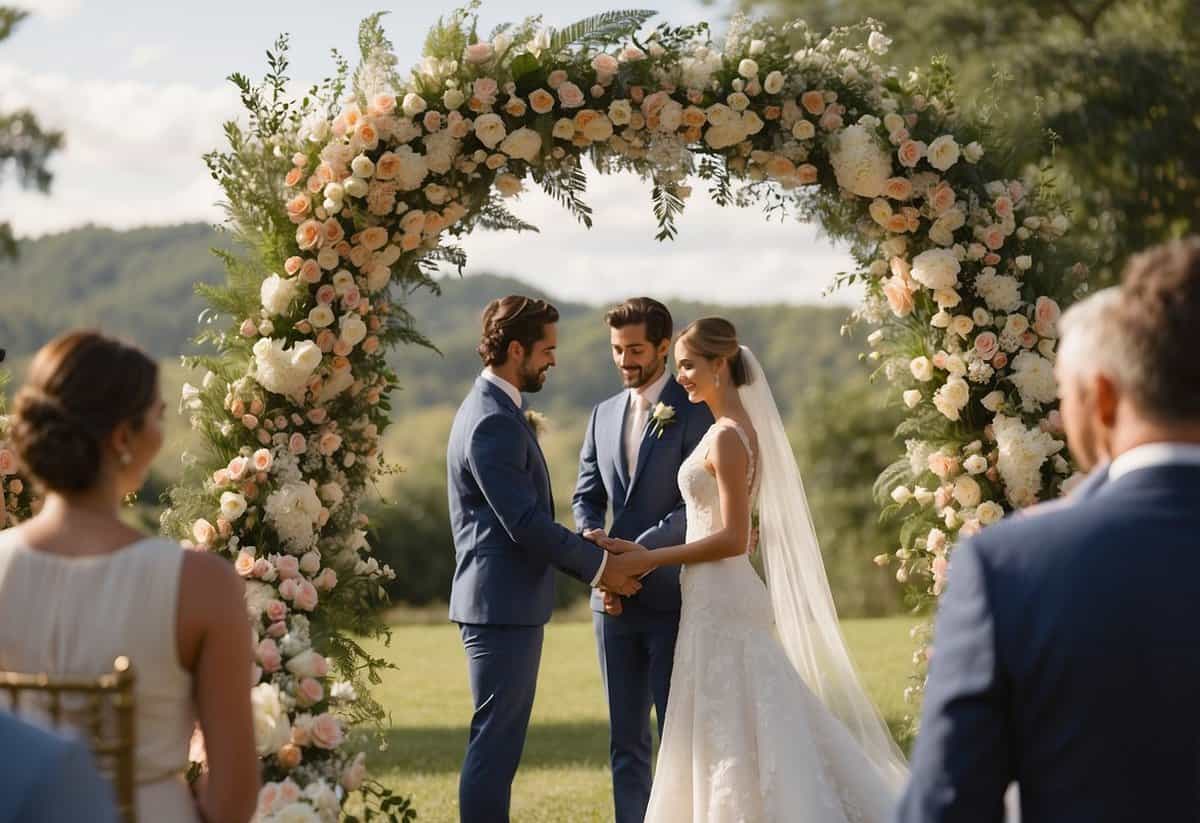
By focusing on key moments and understanding the flow of a wedding ceremony, you can be better prepared to photograph these special events. With the right approach and techniques, you’ll be able to deliver a stunning collection of images that the couple will treasure forever.
1) Capture the First Look

The first look is a special and emotional moment. This is when the bride and groom see each other for the first time before the ceremony.
Timing is everything. Schedule the first look when you can get the best light. Early afternoon light works well.
Choose a private and intimate setting. This helps the couple feel comfortable and relaxed.
Keep your camera ready. Capture the raw emotions and natural reactions. Focus on their faces and close-ups.
Guide them gently on where to stand. Make sure the background adds to the photo.
Remember to be discreet. Let the moment unfold naturally. This will create genuine, heartfelt images that the couple will treasure forever.
2) Shoot the Details
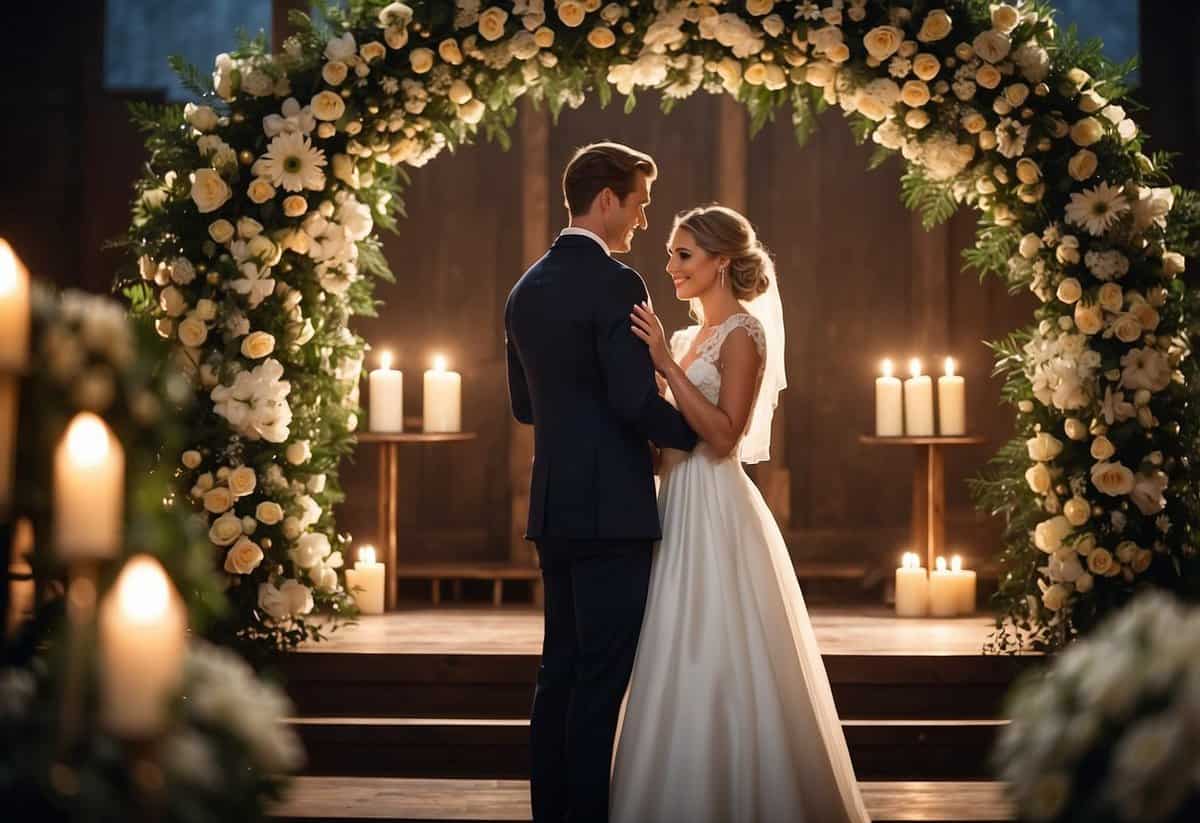
Pay attention to the small details during a wedding ceremony. These moments often capture the essence of the event.
Focus on items like the wedding rings, flowers, and table settings. They add depth to the story you’re telling through your photos.
Don’t forget to capture close-ups of the bride’s dress, the groom’s boutonnière, and the decorations. Each detail contributes to the couple’s big day.
3) Utilize Natural Light
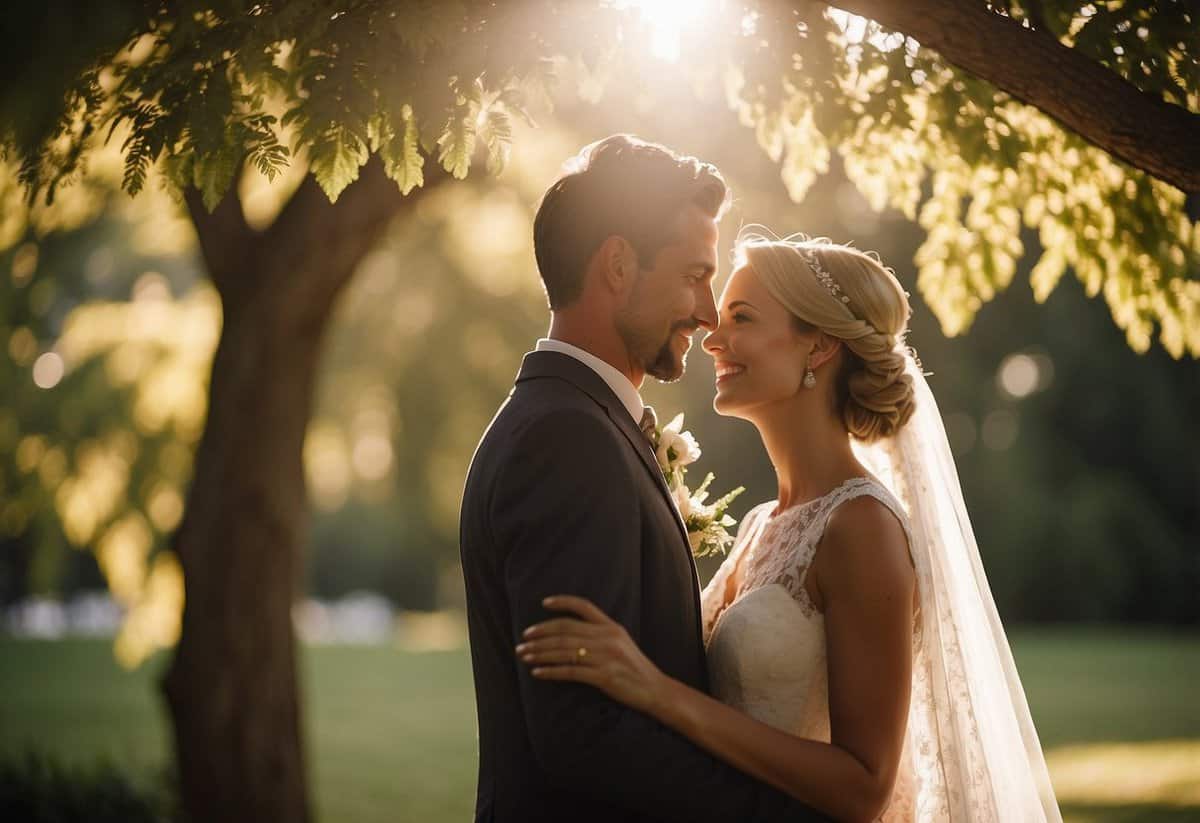
Using natural light in wedding photography can create beautiful, timeless images. One way to make the most of natural light is to position your subjects near large windows. This will help you get soft, even lighting on their faces.
Shooting outdoors can also be very effective. Early morning and late afternoon, often called the golden hours, provide warm, flattering light.
If the ceremony is held indoors, try to schedule it in a location with good natural light sources, such as large windows or open spaces. This will help reduce the need for artificial lighting.
Encourage the bride and groom to move towards the light during the preparations. This will allow you to capture candid moments with a natural feel.
By prioritizing natural light, you can create stunning wedding photos that capture the essence of the day.
4) Frame Emotional Moments
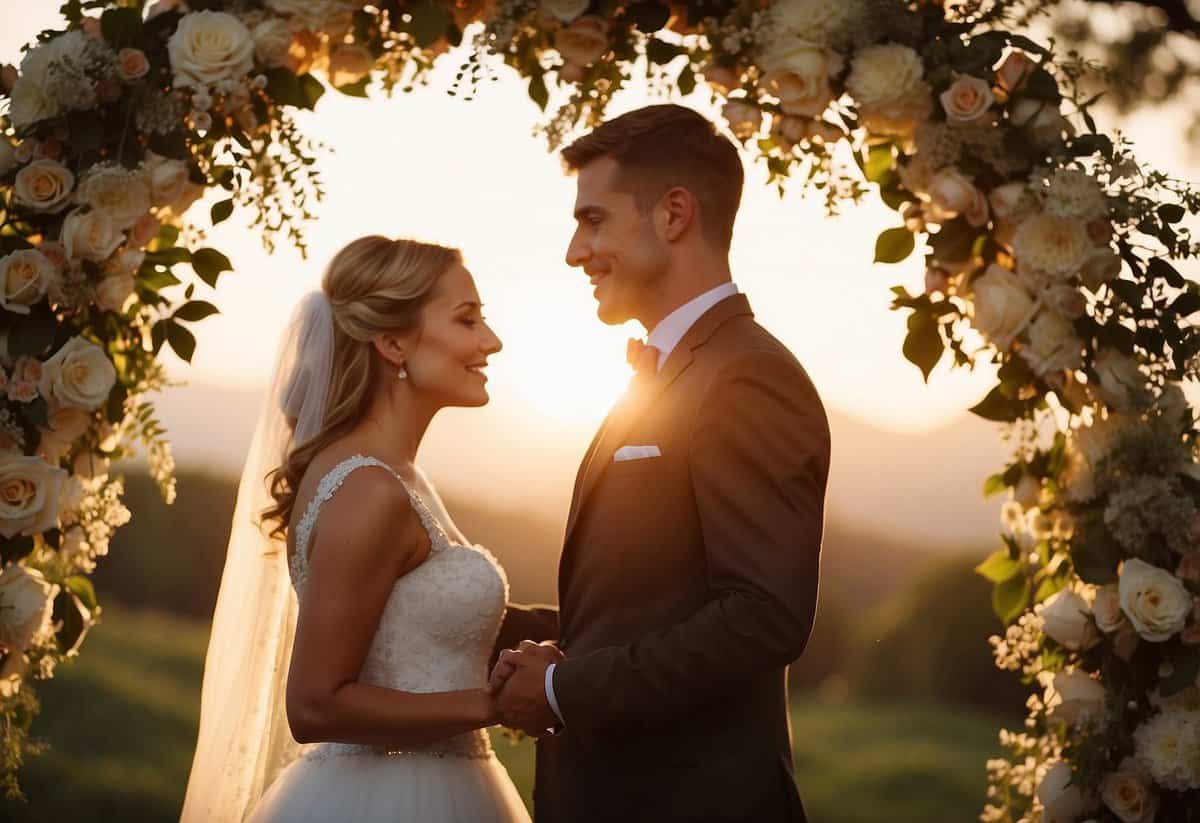
Capturing emotion is key to creating memorable wedding photos. Focus on the reactions of the couple, their families, and friends. These moments tell the real story of the day.
Pay attention to candid moments. The groom’s face when he first sees the bride is priceless. Be ready for tears, laughter, and smiles.
Zoom in on small details that show emotion. A comforting hand on a shoulder or a loving glance can be very powerful.
Use a long lens to capture emotions from a distance. This helps you stay unobtrusive and lets the moment unfold naturally.
5) Get Candid Shots
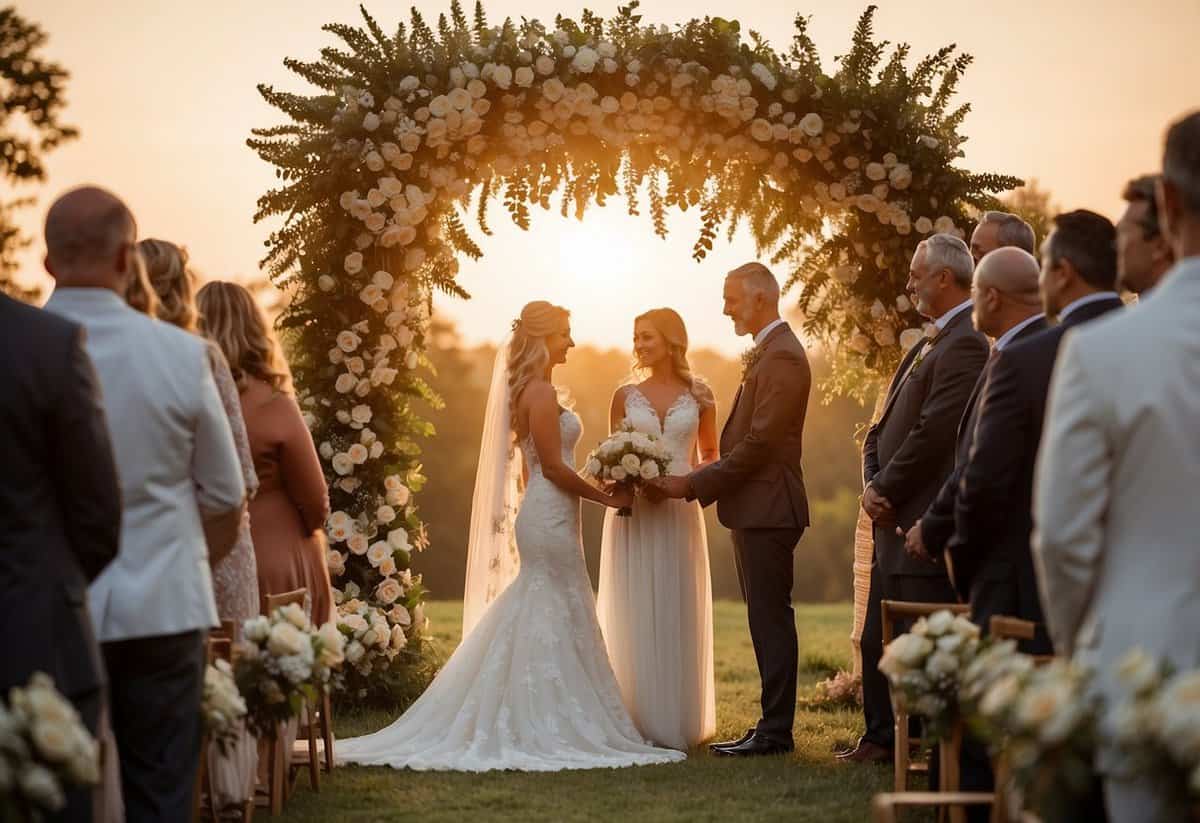
Candid shots capture the true emotions of the day. These moments can include a stolen glance, a shared laugh, or an unexpected dance move. To get these shots, be ready with your camera at all times.
Use a long lens to stay out of the way and avoid interrupting moments. Lenses like a 70-200mm zoom work well. Your subjects won’t notice you, which leads to more natural photos.
Look for quiet, intimate moments. A hug between the bride and her mom or the groom’s nervous smile before the ceremony can make great images. Keep an eye out for anything that shows real feelings.
Capture the scene on the way to the wedding venue or while getting ready. These shots help show the full story of the day. Different angles and perspectives make the album more interesting.
Patience is key. Wait for the right moment instead of forcing it. This will help you get the most genuine photos, making the wedding album truly special.
6) Highlight the Venue
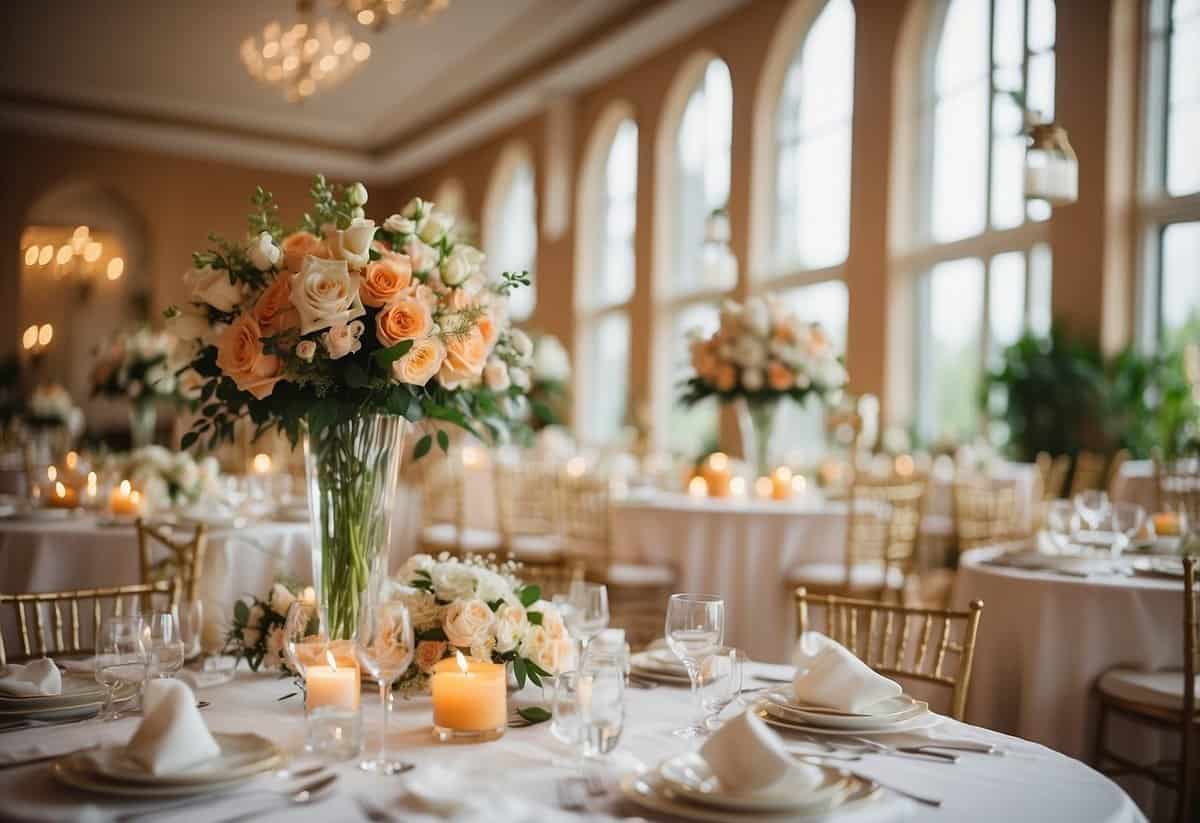
Capture the beauty of the venue in your photos, as it adds context and atmosphere to the wedding album. Take wide shots to show the entire setting.
Focus on unique architectural elements, decorations, and landscaping. These details help tell the story of the day.
Photograph the venue from different angles to showcase its features. This variety makes the wedding album more vibrant and interesting.
7) Focus on Expressions
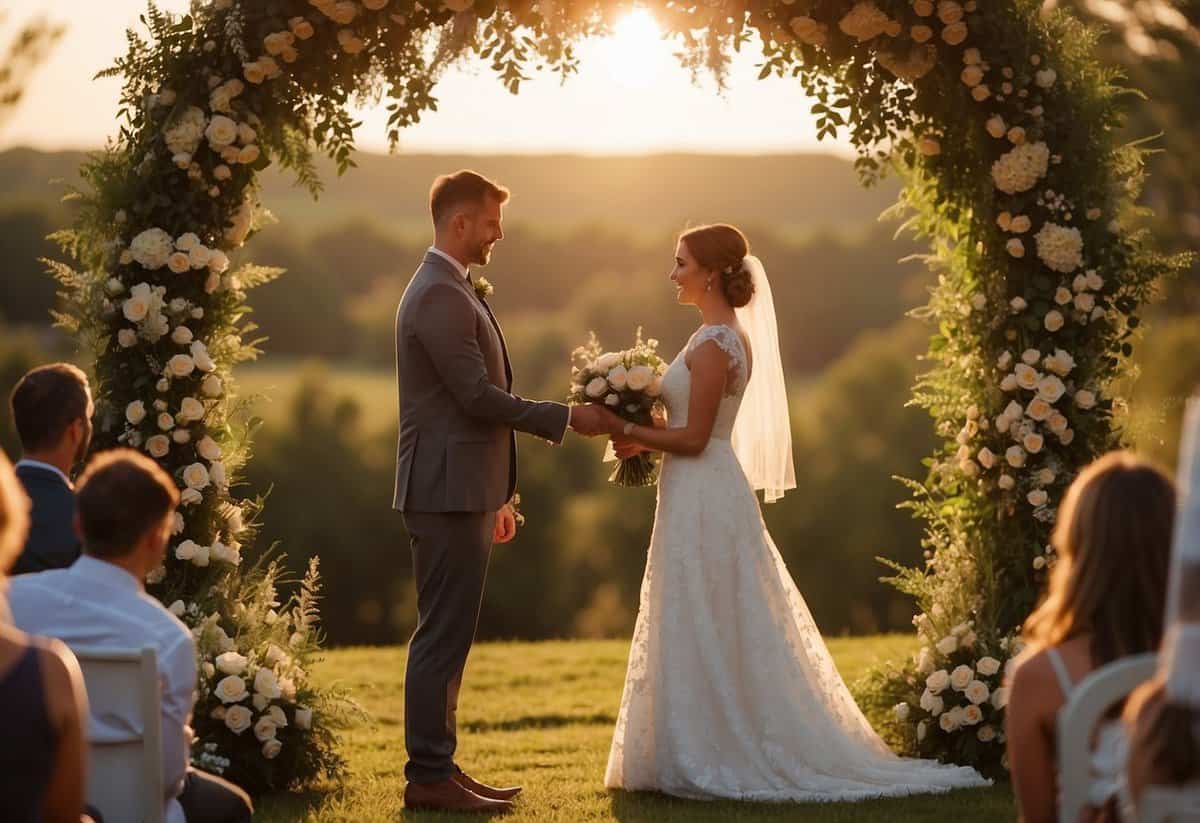
Watch out for genuine smiles and laughter. These moments show the true joy of the day. A telephoto lens helps you capture these emotions without getting in the way.
Blend in with the crowd. When people forget you’re there, you get the best candid shots. Don’t ask the couple to pose; the best moments happen naturally.
Pay attention to the bride and groom’s faces during important moments. Their expressions during the vows or first dance are priceless. Capture those special glances and tears.
Anticipate emotional moments. Be ready when the father of the bride gives his speech or when the couple exchanges rings. These are perfect times for capturing heartfelt expressions.
8) Take Pre-Ceremony Photos
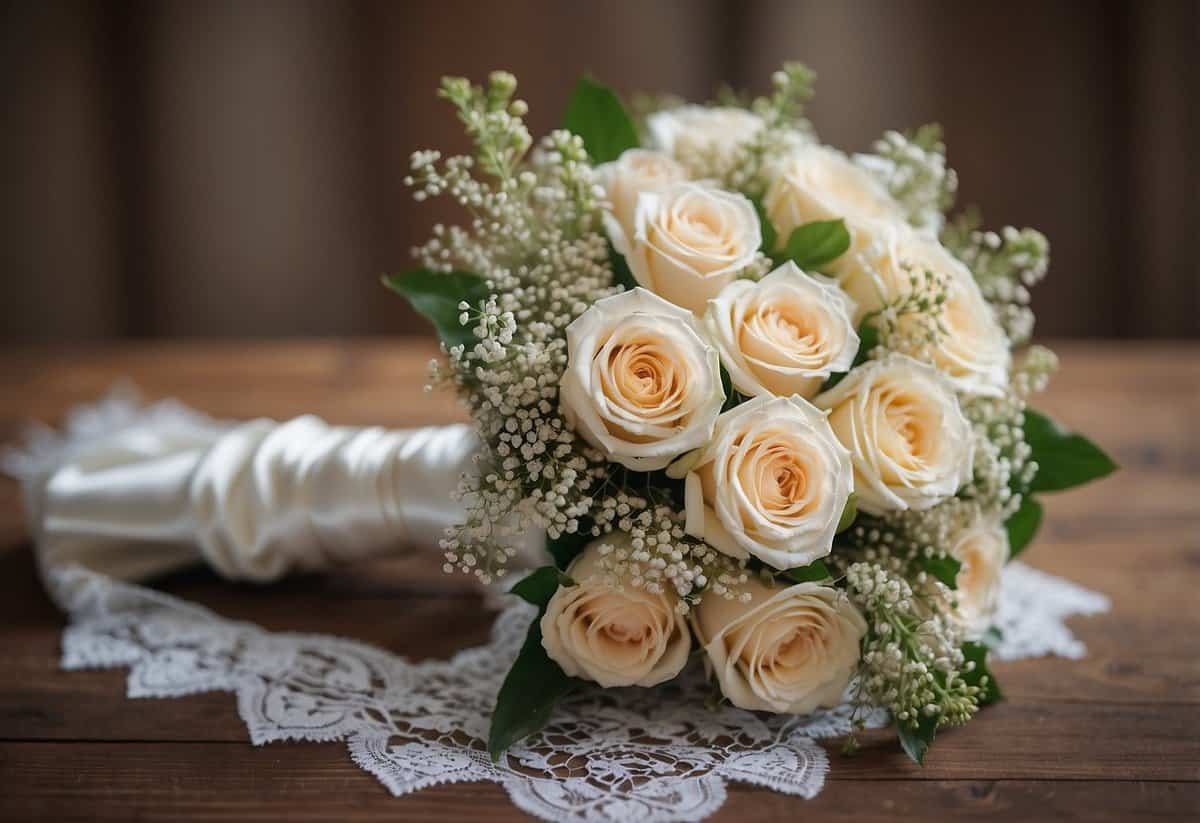
Capturing pre-ceremony moments is essential. These photos set the tone for the wedding album. Start with the bride and groom getting ready. Focus on their emotions and details like the dress, rings, and bouquets.
Don’t forget the bridal party. Snap some candid shots of their interactions and last-minute preparations. Group shots with the bridesmaids and groomsmen can also be fun.
Take detailed photos of the venue before guests arrive. Capture decorations, seating arrangements, and any personal touches. These images will help tell the complete story of the day.
9) Capture Traditional Elements
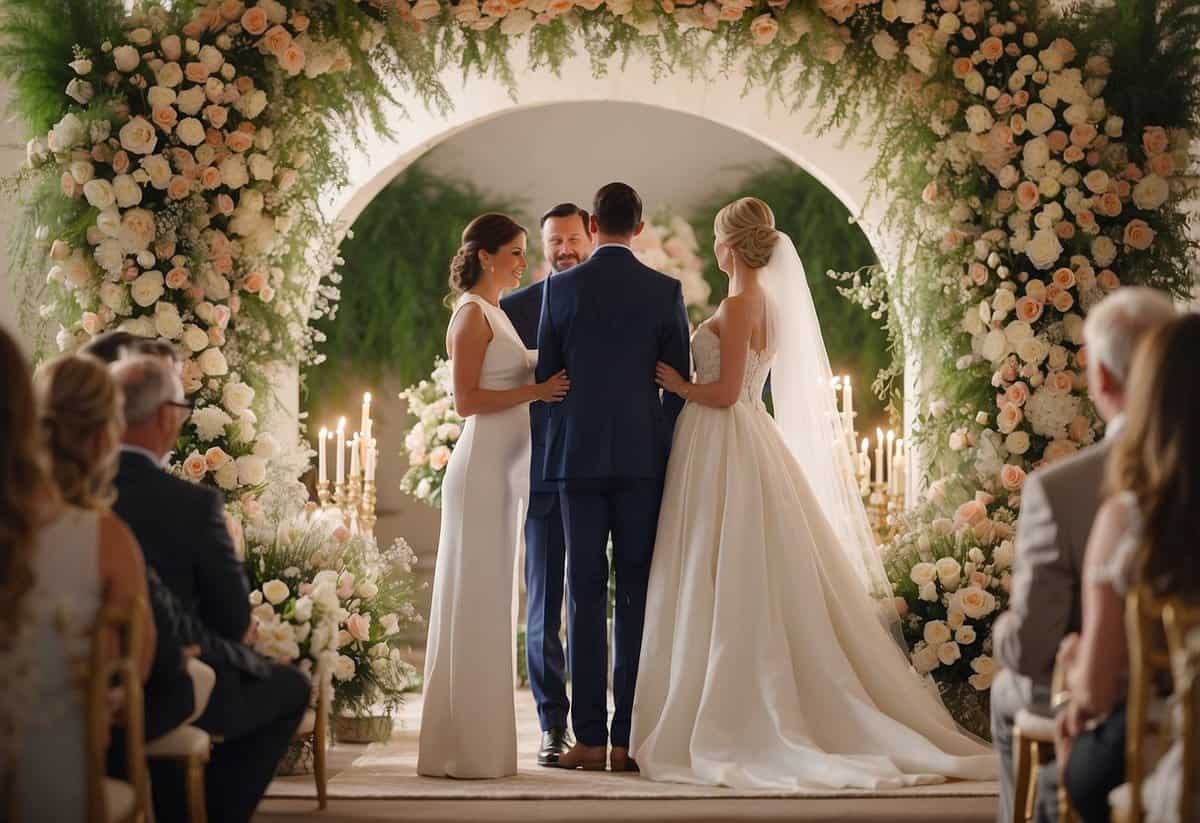
Photographing traditional elements at a wedding ceremony is important. These moments are often significant in representing the couple’s culture or religion.
Focus on capturing the exchange of vows, the ring ceremony, and any symbolic rituals. These moments are heartfelt and meaningful, so be sure to take close-up shots.
Pay attention to any cultural or religious traditions. This can include specific garments, prayers, or dances. Documenting these details helps to tell the full story of the couple’s special day.
10) Create Artistic Shots
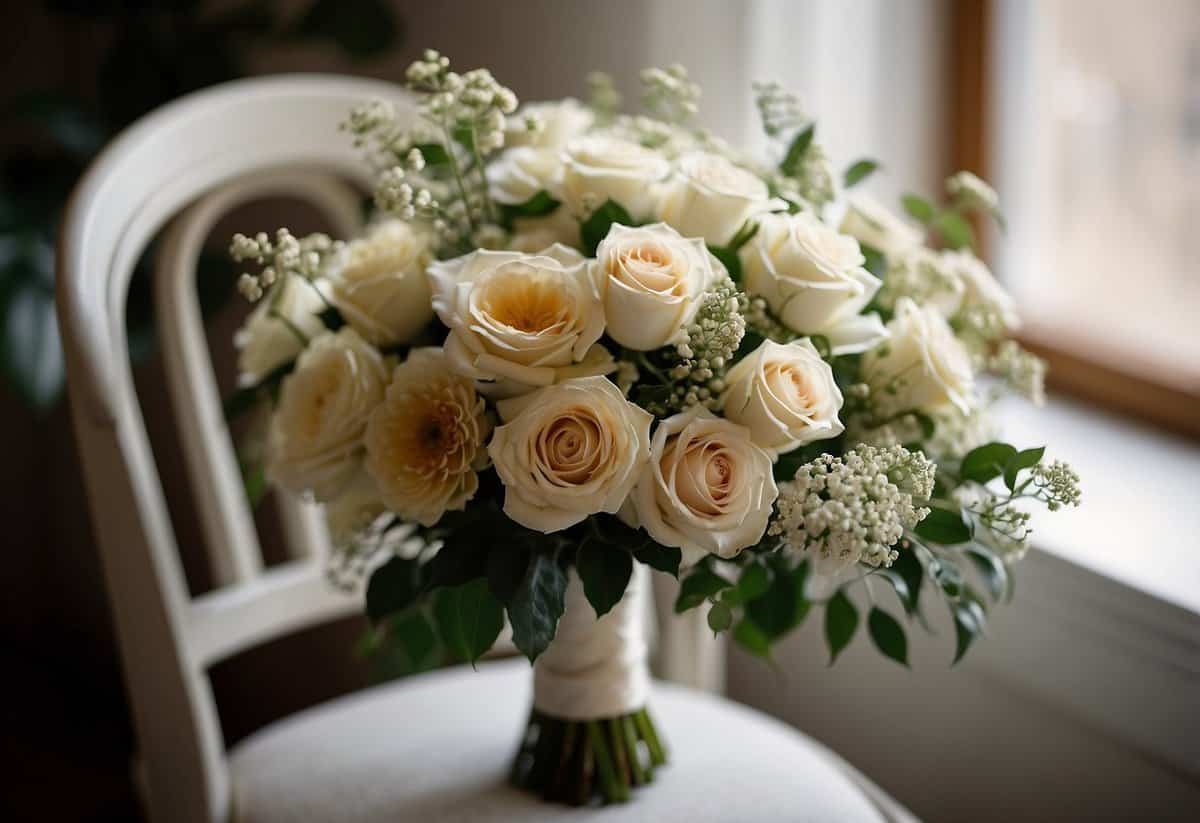
Artistic shots can make a wedding album truly special. Look for unique angles and perspectives to capture.
Try shooting from a low angle to highlight the dress train or from above to show off intricate patterns in the decorations.
Play with light and shadow for dramatic effects. Use natural light streaming through windows or create silhouettes against a sunset.
Experiment with reflections by using mirrors or water sources to add depth and interest. Capture moments through glass for a soft, dreamlike quality.
Don’t be afraid to break the rules. Use unconventional compositions or blur some elements to emphasize motion and emotion.
Understanding Lighting in Wedding Photography
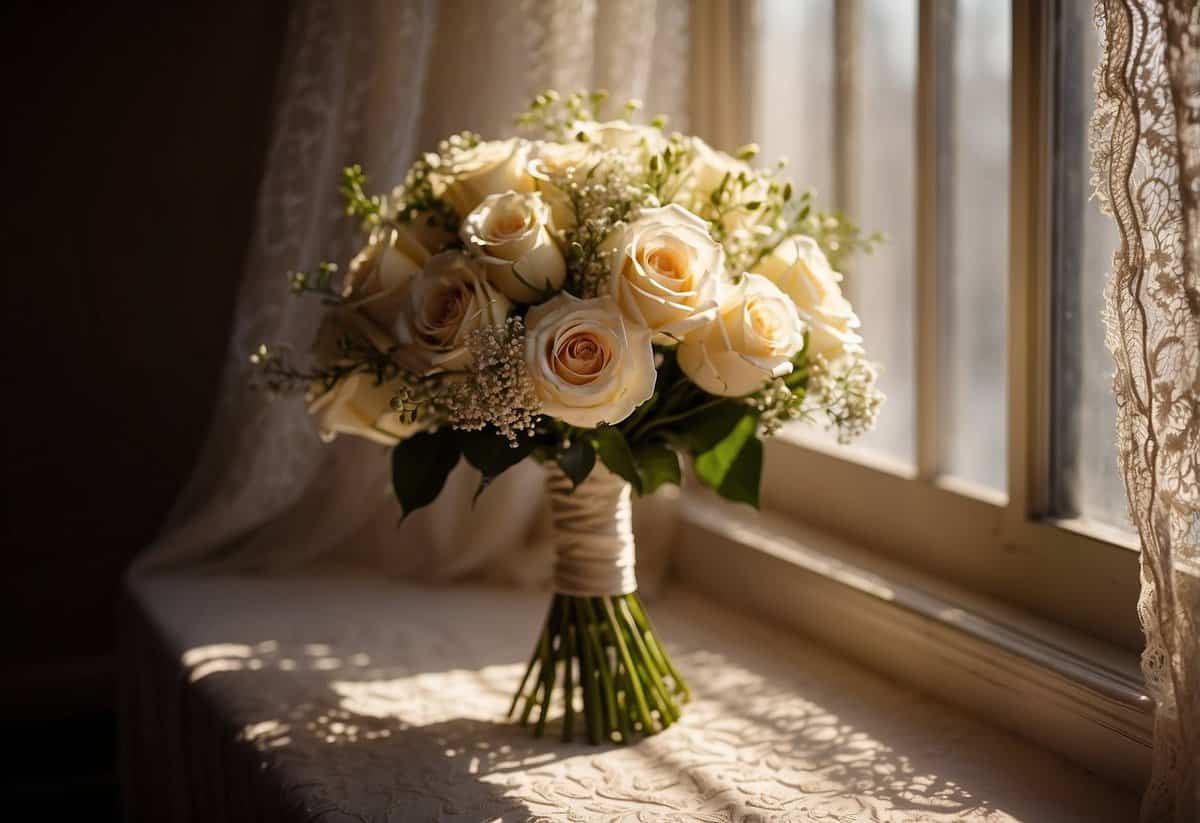
Mastering lighting is essential for great wedding photos. You need to use natural light effectively, choose the right artificial lighting, and understand how to use reflectors and diffusers.
Natural Light Utilization
Natural light can give your photos a soft and warm effect. Shooting during the golden hour—an hour after sunrise or before sunset—provides the best light for wedding ceremonies. This light is not too harsh and can create beautiful, romantic pictures.
During indoor ceremonies, you can use window light, which acts as a large softbox. Position the couple so that the window light falls on their sides or face to create dramatic and flattering portraits. Always be aware of the direction and quality of light to make the best use of natural light.
Artificial Lighting Techniques
Artificial lighting can be crucial, especially in dim or dark settings. Off-camera flash lets you control shadows and highlights, adding depth to your photos. Using bounce flash off walls or ceilings can soften the light and reduce harsh shadows, creating a more pleasing look.
Diffusers and softboxes can make the light softer and more even, ideal for capturing intimate moments. Always use artificial lights with purpose, not as a default, to enhance the natural ambiance of the setting. Experiment with different positions and intensities to find the best results for each scene.
Using Reflectors and Diffusers
Reflectors and diffusers are your best friends when dealing with tough lighting conditions. Reflectors bounce light back onto your subjects, filling in shadows and providing balanced light. You can use white, silver, or gold reflectors depending on the desired effect.
Diffusers help to spread light evenly, reducing the harshness, especially during midday when the sun is at its peak. You can use portable diffusers to soften sunlight, making it more flattering for portraits. Always position reflectors and diffusers carefully to avoid creating unwanted shadows or highlights.
By understanding and using these lighting techniques, you’ll be able to capture beautiful, well-lit wedding photos that your clients will cherish forever.
Capturing Candid Moments
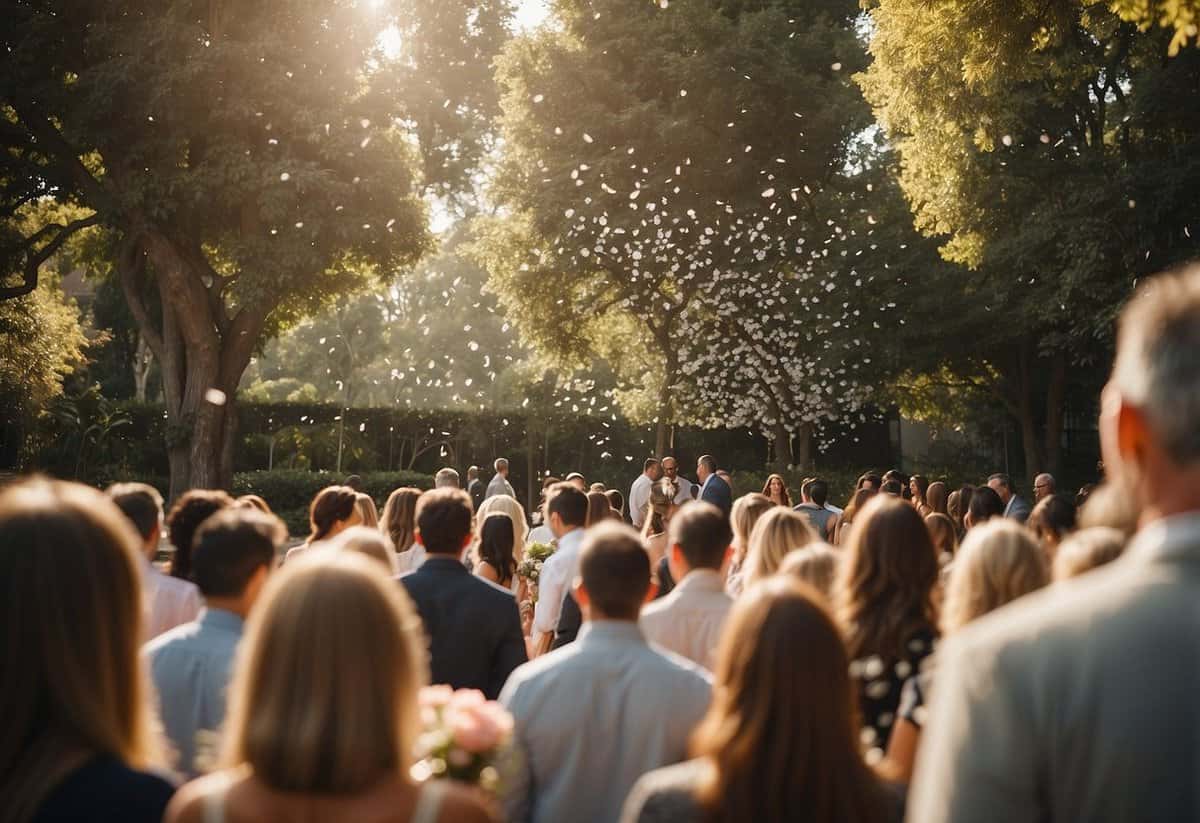
To master candid moments at weddings, you need to blend in seamlessly and have a lot of patience. Natural, unposed shots can tell beautiful stories and evoke real emotions.
Blending into the Background
Your goal is to be almost invisible. Wear neutral colors that match the wedding’s theme. This helps you move around without drawing attention. Use a zoom lens to snap pictures from a distance, so guests won’t notice you. Try staying at the edges of groups where you can quietly observe and photograph genuine interactions.
Watch for moments when people are relaxed and being themselves. This could be a whispered joke, an emotional hug, or kids playing. The key is to be present but unnoticed, capturing these fleeting, authentic moments as they happen.
Timing and Patience
Patience is crucial for great candid shots. Don’t rush. Take your time to observe and wait for special moments to unfold naturally. A good candid photo captures people’s true expressions and feelings. This might mean waiting a bit longer for the right moment, but it’s worth it.
Always be ready. Keep an eye on important events like the bride and groom’s first look or a quiet moment before the ceremony. Have your camera on hand and stay alert. This way, you can perfectly capture those unplanned, heartwarming moments that make the wedding day special.
Essential Gear for Wedding Ceremonies
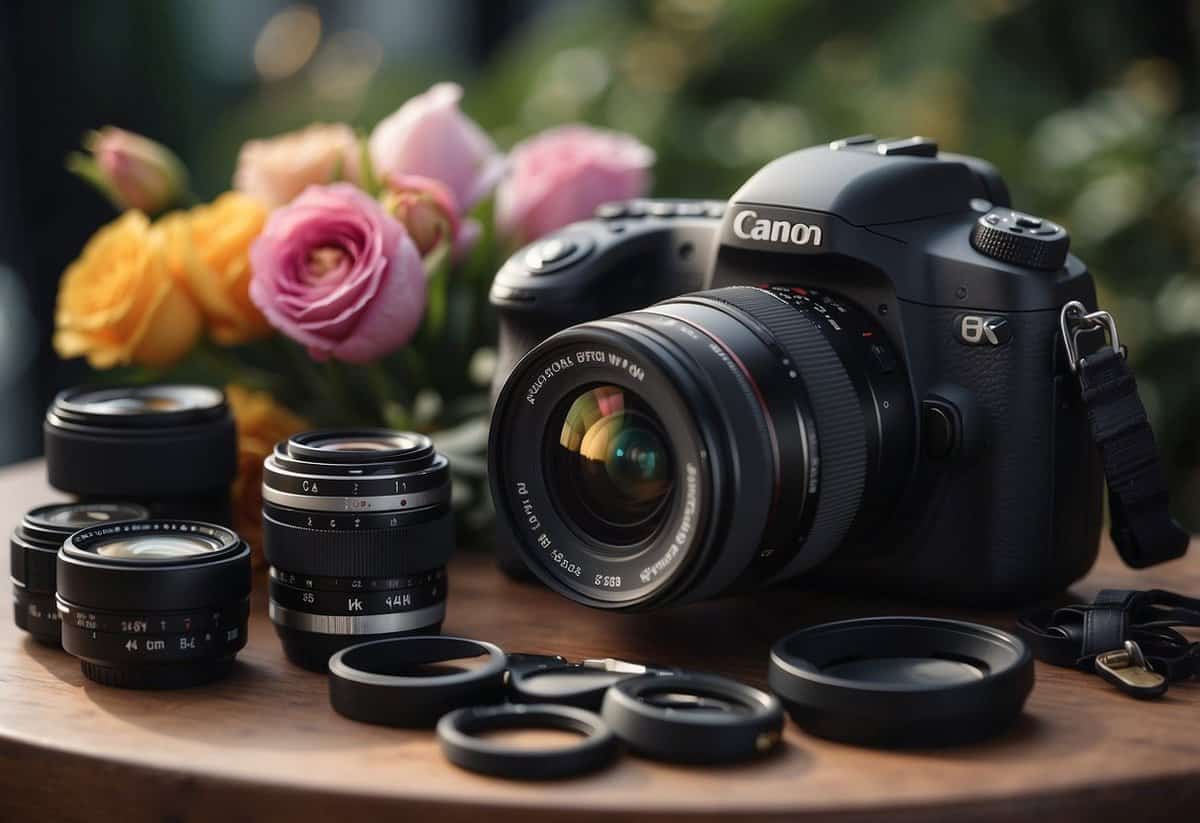
Understanding what gear to bring is critical for a successful wedding shoot. You need reliable cameras, versatile lenses, and essential backup equipment to make sure you capture every special moment without a hitch.
Cameras and Lenses
For wedding photography, two camera bodies are essential. This allows you to switch between lenses quickly, without missing any action. A full-frame DSLR or mirrorless camera is ideal for high-quality, detailed shots.
Lenses are just as important as cameras. A 24-70mm lens is versatile for different scenes, while a 70-200mm lens helps with capturing candid moments at a distance. A 50mm prime lens is great for portraits and low-light conditions, offering sharp and beautiful images.
Extra batteries and memory cards ensure that you never run out of storage or power during crucial moments. Keep them organized and easily accessible to avoid any delays or missed shots.
Backup Equipment
Always have backup equipment on hand. This includes extra cameras and lenses in case of malfunctions. Accidents happen, and having spares ensures that your shoot can continue smoothly.
An external flash is useful for low-light conditions, especially during indoor ceremonies. It helps in achieving well-lit photos without overexposing parts of the image. Using a tripod can also be beneficial for steady shots during key moments of the ceremony, like exchanging vows.
Remember to pack spare batteries and memory cards. They’re crucial for long wedding events. An extra battery charger can save you if both primary batteries run low, keeping your gear ready to shoot at any moment.
Stay prepared by organizing everything in a sturdy camera bag. This helps protect your equipment and makes it easy to transport from one location to another.








